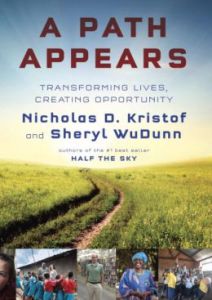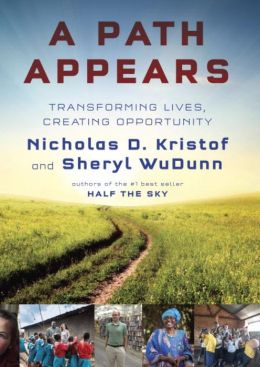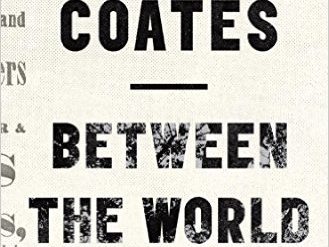
Nicholas Kristof is one of the most-honored journalists of our time. He’s regarded by many of his peers as the “moral conscience of journalism” for his decades-long work exposing human rights abuses and human trafficking. Among a plethora of other awards and distinctions, Kristof received a Pulitzer Prize in 1990 along with his wife, Sheryl WuDunn, for their reporting on the student democracy movement in China and the Tiananmen Massacre. Kristof is best known today for his twice-weekly New York Times Op-Ed column, which I read without fail. Bill and Melinda Gates even credit one of Kristof’s columns with pointing them toward an emphasis on world health in their philanthropic work. Their writing is well known to thousands of activists committed to building a better world.
A Path Appears is the fourth book to appear by Kristof and WuDunn and in some ways the most ambitious. Two earlier works grew out of their reporting from China. Then they wrote Half the Sky, a New York Times bestseller that explored the oppression and the potential of women to build a better world. In A Path Appears, the couple set their sights higher:
“So many social problems in the twenty-first century seem intractable and insoluble. We explore Mars and embed telephones in wristwatches, but we can’t keep families safe in inner cities. We can map subatomic particles such as gluons, and we can design robots that drive cars, respond to speech, and defeat grandmasters in chess, but we grudgingly accept failure in our struggles to keep kids in school, off drugs, and out of gangs.”
A Path Appears: Transforming Lives, Creating Opportunity by Nicholas D. Kristof and Sheryl WuDunn ★★★★☆
Through snapshots of extraordinary individuals who building large-scale, mission-driven enterprises, both for profit and nonprofit, Kristof and WuDunn demonstrate the capacity of the human race to prevail against our most deep-seated social and economic challenges. However, they are by no means cheerleaders for knee-jerk philanthropic efforts to right the world’s wrongs; they devote great effort to discussing the many missteps that others have taken along the same road, and they acknowledge that massive resources have been squandered in failing attempts by outsiders to improve the lives of the poor.
At its most venturesome, A Path Appears is an attempt to determine why some people are altruistic and what can be done to raise the level of compassion in the world. Kristof and WuDunn interview cognitive scientists and even undergo brain scans themselves to gain better understanding of the chemical basis of altruism. Their exploration leads to conclusions few readers will find surprising: that helping others makes us feel good about ourselves, and that philanthropy is its own reward.
Nonprofits fail to gain the scale necessary to building a better world
However, the authors deplore the failure of the nonprofit sector to achieve scale. “Researchers from the Bridgespan Group wrote in the Stanford Social Innovation Review that more than 200,000 nonprofits have started since 1975, but that by 2008 only 201 had reached annual revenues of $50 million. In a similar time frame, more than 46,000 for-profit corporations broke the $50 million barrier.” Kristof and WuDunn note in passing that for-profit companies have the potential to be more sustainable than nonprofits. Unfortunately, they don’t acknowledge the implications of this contrast: that market-driven models hold far more promise for addressing global problems at scale than do philanthropic ones. If there’s a flaw in this book, that’s it.
However, for a general audience seeking answers to how the human race can thrive in the face of the world-class challenges facing us, A Path Appears is a brilliant survey of what’s possible. In the final analysis, as Kristof and WuDunn conclude, “Our efforts at altruism have a mixed record of success at helping others, but they have an almost perfect record of helping ourselves.”
For related reading
This is one of the books I’ve included in my post, Gaining a global perspective on the world around us.
Like to read books about politics and current affairs? Check out Top 10 nonfiction books about politics.
If you enjoy reading nonfiction in general, you might also enjoy:
- Science explained in 10 excellent popular books
- 10 great biographies
- My 10 favorite books about business history
And you can always find my most popular reviews, and the most recent ones, on the Home Page.



























